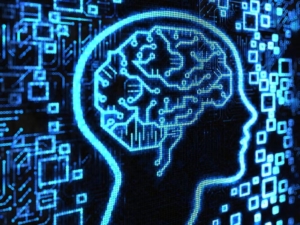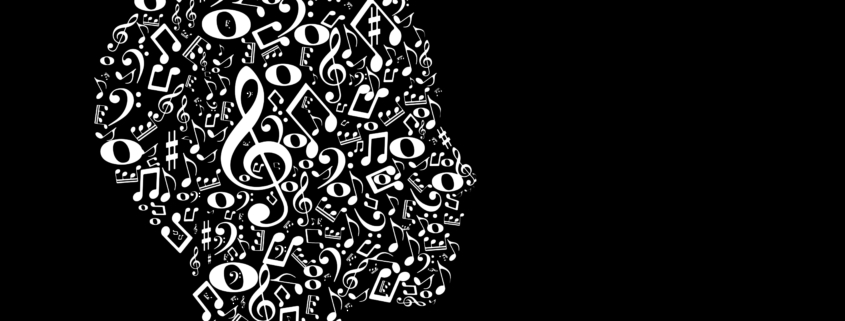Are we what we hear? A reflection on sound, identity and science communication
Sounds have the power to place us in different mental spaces. Accordingly, sound and music can connect deeply to our perceptions of who we are and where we come from. While musing on how sound can be used to communicate science, I started to wonder if connecting to people’s sense of identity through sound could help us deliver our science messages in a more personal, more meaningful way.
I spent the last decade living away from home, and the more time passes, the more I miss it – I miss it terribly. I don’t know if it is my longing for familiarity that makes me turn my head every time I hear Fado in an unexpected place, but I wonder if there is more to it. I am sure most people can appreciate music from all over the world, but I seem to feel a deep connection to music I associate with home.

Fado was immortalized in this painting by José Malhoa.
This trail of thought has led me to wonder if there is any science on the connection between sound and identity. Not in the sense of the music our DNA can play. But rather, do our brains recognise and react differently to sounds we associate with childhood, with home? Does what we listen to as we grow up impact our personalities, our identities, and do we connect to who we are when we hear these sounds again? Not necessarily music, but other sounds like the sea, or the wind rustling the trees in the woods. On a recent trip home, I found myself escaping my room to go sit outside in silence, listening to the crickets sing into the night. It had been so long since I had heard that sound… it soothed me. Was my brain somehow transported to a time in my life when stress wasn’t a thing? Did it recognise the crickets and respond by calming me down? Knowing I was home? Knowing I was safe?
One could leave matters with this poetic wondering but, being a scientist, I thought I’d look into these connections more deeply and try to understand more about how our brains recognize sound and how that may or may not play into who we are, or who we identify with. Babies are able to hear sounds when still in the womb, and in fact it is thought that the auditory stimulus of hearing the mother’s voice pre-birth may prepare the babies’ brain for processing sound after birth. Our brains also seem to be able to identify sounds (voices, in particular) while still in the womb, and continue to identify those same voices after birth. In recognising these sounds, babies turn their heads and their heart rates go up.

Later in life, our brains are known to react in very particular ways to music, which induces all kinds of often powerful emotions. The process through which our ears collect sound and transport it as electrical stimuli to our brain is, as Laurianne explains in this Crastina article, fairly well understood. But what the brain does with those stimuli, and importantly how it extracts information from them – where is the sound coming from, what is producing the sound, how to interpret the sound – is much more elusive, and becomes even more complex in noisy environments. We do know, however, that the way brains interpret sound is influenced by sound experiences accumulated over the course of a lifetime.
While we may not know much about the exact mechanism by which our brains extract meaningful information from sound, we do have some evidence of its importance in social contexts. For example, through the ages people have used well-defined rhythm patterns associated with music to synchronise their movements (also known as dancing), which acts as a ‘social enhancer’. Individually, music has also long been recognised as a means for people to express themselves and to regulate their moods and behaviours.
On a collective level, music and sounds have been found to play an important role in the cultural fabric of countries and otherwise defined groups of people. In this way, sound has been crucial for a sense of community and belonging: music brings together batá drummers in Cuba, as it does Tamil communities in Ohio, and different groups of people with overlapping identity traits all over the world. As such, sound is a significant component of our cultures and backgrounds. Our connections with sounds we have had more exposure to over the years, particularly during the early years when we built our senses of self, not only impact the way we interpret new sounds, but are also deeply connected to our perceptions of who we are and where we belong in the world.

Cuban batá drummers.
The pedagogical value of music has also long been recognised: musical games and strategies can be used to improve memory and overall academic performance, as well as developing widely transferable skills. However, given the power of sound to relate to our true selves at such a deep level, I find it relevant to consider these ideas on sound and identity to foster meaningful science communication.
As discussed in mine and Laurianne’s recent interview with Raven, The Science Maven, connecting to people’s cultures and backgrounds may help with creating a welcoming, relatable space where science communication can happen in a more meaningful and empowering way. As Raven mentioned in her interview, there is a space for using music for STEM outreach as a tool for personalising spaces and activities, to foster the representation of a diverse STEM community, and to make people feel welcome.
If sound and music really do connect deeply to our identities, to who we are and to the places we call home, if they transport us to the places where we feel safe (like my crickets in the night), my personal reflection is that this can be used to create inclusive environments where people can thrive and where meaningful science communication can take place. Raven’s work certainly makes a strong case for that hypothesis.
Raven uses Hip-Hop to (amongst other things) make science look cool and thus welcoming (and desirable!) to a diverse group of people. Others, such as ASAPScience, make science-themed parody covers of pop-music. I could envisage using selected snippets of songs to hold people’s attention during a public engagement talk – perhaps have Oingo Boingo come in to say ‘weird science!’ when I’m about to present some baffling results, introduce people to Tom Lehrer’s song ‘The Elements’, or break that murmur at the beginning of a lecture when people aren’t quite settled down by kicking it off with the ‘History of Everything’? Or the Lion King intro?
The important thing would be, of course, if we are trying to make it culturally relevant, to really take the time to consider and get to know your audience to try to understand what sounds and songs would speak to them the most. I close this reflection by leaving you with a tantalising question: how will you use culturally relevant music and sounds, which may speak to your audience’s identities, in your next science communication activity?
- Turning frustration into change: Jean-Sébastien Caux, founder of SciPost - August 9, 2021
- Dr Nicola Nugent: Publishing Manager at the Royal Society of Chemistry - December 7, 2020
- Public Engagement and Trust in Science: In Conversation with Dr. Farzana Meru - November 23, 2020
- Is the peer review process trustworthy? Perspectives by Dr. Jurado Sánchez - November 4, 2020
- Prof. Maria Baghramian: Policy, Expertise and Trust in Action - October 29, 2020
- Prof. Luke Drury: ‘When Experts Disagree’ - October 5, 2020
- Are we what we hear? A reflection on sound, identity and science communication - September 27, 2020
- Sign your Science - September 22, 2020
- Raven the Science Maven - August 18, 2020
- Dr Mark Temple: DNA Sonification or when Scientist are musicians - August 5, 2020





Leave a Reply
Want to join the discussion?Feel free to contribute!